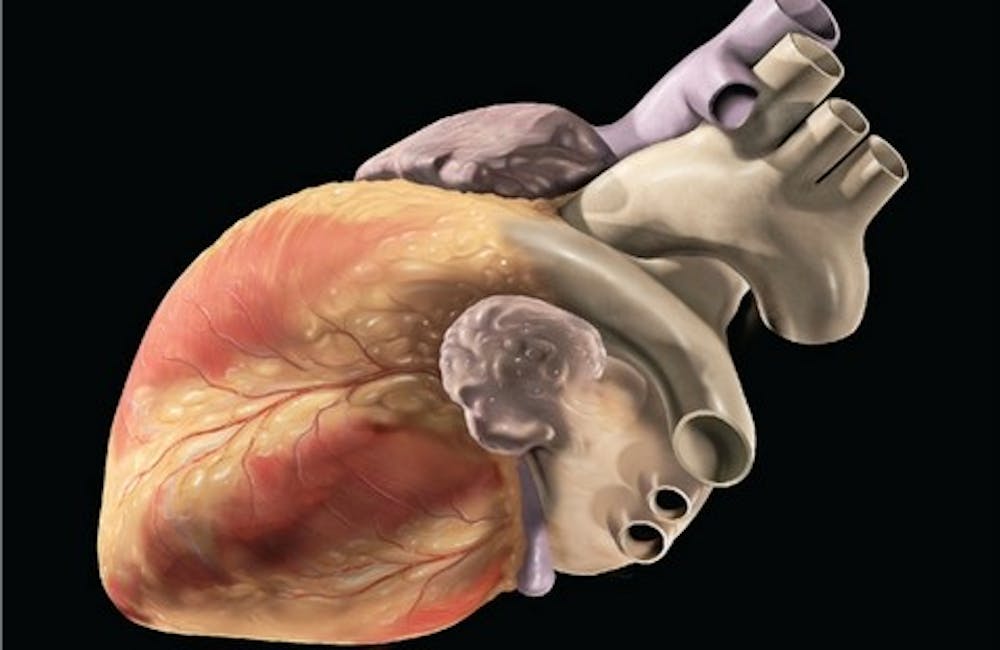New research out of Duke offers a fresh solution to a broken heart—literally.
Biomedical engineers recently published a paper about developing fully functioning human heart muscle tissue in a patch large enough to potentially repair damage caused by heart attacks. Ilia Shadrin, an M.D./Ph.D. candidate in biomedical engineering and lead author of the study, said the project is a major breakthrough in the field of cardiac tissue engineering and will ultimately have significant clinical relevance.
“What we did in our project was go from a single human stem cell and make a functioning heart tissue that replicates a lot of the characteristics of native adult human heart tissue,” he said. “No one has been able to make this type of high-functioning heart tissue in this type of size.”
The size of the tissue is significant in that it is the first instance of a patch large enough to be useful for human therapy, as a 4x4 centimeter square piece of tissue, according to the paper. Previously, the lab developed a 1x1 centimeter patch.
The tissue is developed with hydrogel methods, which combine several essential ingredients. Eventually, the gel matures into a tissue by producing proteins to remodel the matrix and form proper cell connections for maturation.
During a heart attack, blood flow to a part of the heart decreases or ceases, leading to portions of the heart muscle dying. However, heart muscle generally does not regenerate, so the heart weakens over time. Although current therapies halt the progression of the disease, no treatment has been developed to replace the muscle.
“All the different medicines help the heart function as well as it can with the decreased muscle it has, but nothing’s been able to grow back the muscle,” Shadrin said. “With our research, we think that having a pre-functioning tissue that could then be applied on top of the heart could actually add back some of the muscle that’s been lost during the heart attack.”
Nenad Bursac, professor of biomedical engineering and senior author of the paper, said that when the patch is surgically placed on top of the area above where the heart attack occurred, it will work with the heart to replace the function of the lost muscle.
“We’ve shown that these tissues survive in two animal models—a mouse model where we can show that these tissues get vascularized when implanted into the back of a mouse, and a rat model where we can implant onto the actual heart of the rat and show that they continue electrical and mechanical activities without causing any electrical disturbances or arrhythmia,” he said.
Since rodent heart rates are much higher than those of humans, Bursac said the rat model may not be as applicable to human study. Instead, his team is now collaborating with researchers at the University of Alabama at Birmingham to test the ability of the patch to survive on and ultimately repair damaged parts of hearts in pigs. The lab's current collaborations with the University of Wisconsin-Madison focus on engineering different types of cells that minimize the immune response to these tissues, thus allowing the tissue to be implanted in individuals without risk of rejection.
However, there are still several challenges to tackle, including developing a thicker patch and ensuring that the patch can be fully integrated with appropriate vasculature to meet the heart’s metabolic demands.
“If there are big breakthroughs and fast developments, I expect a potential clinical application 10 years from now,” Bursac said.
Get The Chronicle straight to your inbox
Signup for our weekly newsletter. Cancel at any time.

